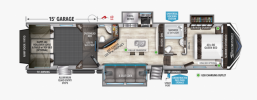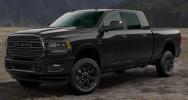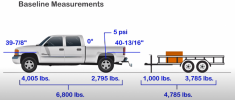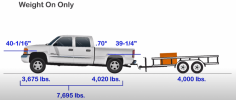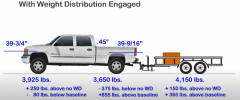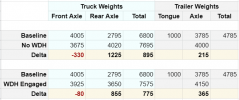HAL9001
Well-Known Member
- Joined
- Nov 10, 2020
- Messages
- 336
- Reaction score
- 672
- Points
- 93
Yes, I'm aware that a WDH can shift some of the weight to the trailer axles. However, it's hard to verify and I don't know if I would want to count on it. It would be much better to start off with the proper specs as if no WDH was going to be used. I will, of course, definitely use a WDH to transfer some of the load off of the truck's rear axle and onto the front axle, which is its primary purpose. If it also shifts some of the weight onto the trailer's axles, which it probably will, so much the better, but again it's hard to verify and count on that.
When I brought up the issue of payload with the RV dealer, he said that without WD hitches he couldn't sell half as many trailers. He said half-ton pickups wouldn't be able to tow nearly as many trailers without them. He assured me that the 27RB trailer I was considering would be fine with a WDH given my payload. Of course, I'm not going to take just his word on that.
I'm looking into exactly what WDH's can and cannot do. Like most trailing aspects, opinions vary wildly and it's hard to know exactly who to believe. I'd like to see some rock-hard evidence to convince me. I'll be digging into that this weekend when I have some time.
I do like this WDH though. At least it gives you some indication of what's going on. The others are more or less hit or miss when you set them up.
When I brought up the issue of payload with the RV dealer, he said that without WD hitches he couldn't sell half as many trailers. He said half-ton pickups wouldn't be able to tow nearly as many trailers without them. He assured me that the 27RB trailer I was considering would be fine with a WDH given my payload. Of course, I'm not going to take just his word on that.
I'm looking into exactly what WDH's can and cannot do. Like most trailing aspects, opinions vary wildly and it's hard to know exactly who to believe. I'd like to see some rock-hard evidence to convince me. I'll be digging into that this weekend when I have some time.
I do like this WDH though. At least it gives you some indication of what's going on. The others are more or less hit or miss when you set them up.





